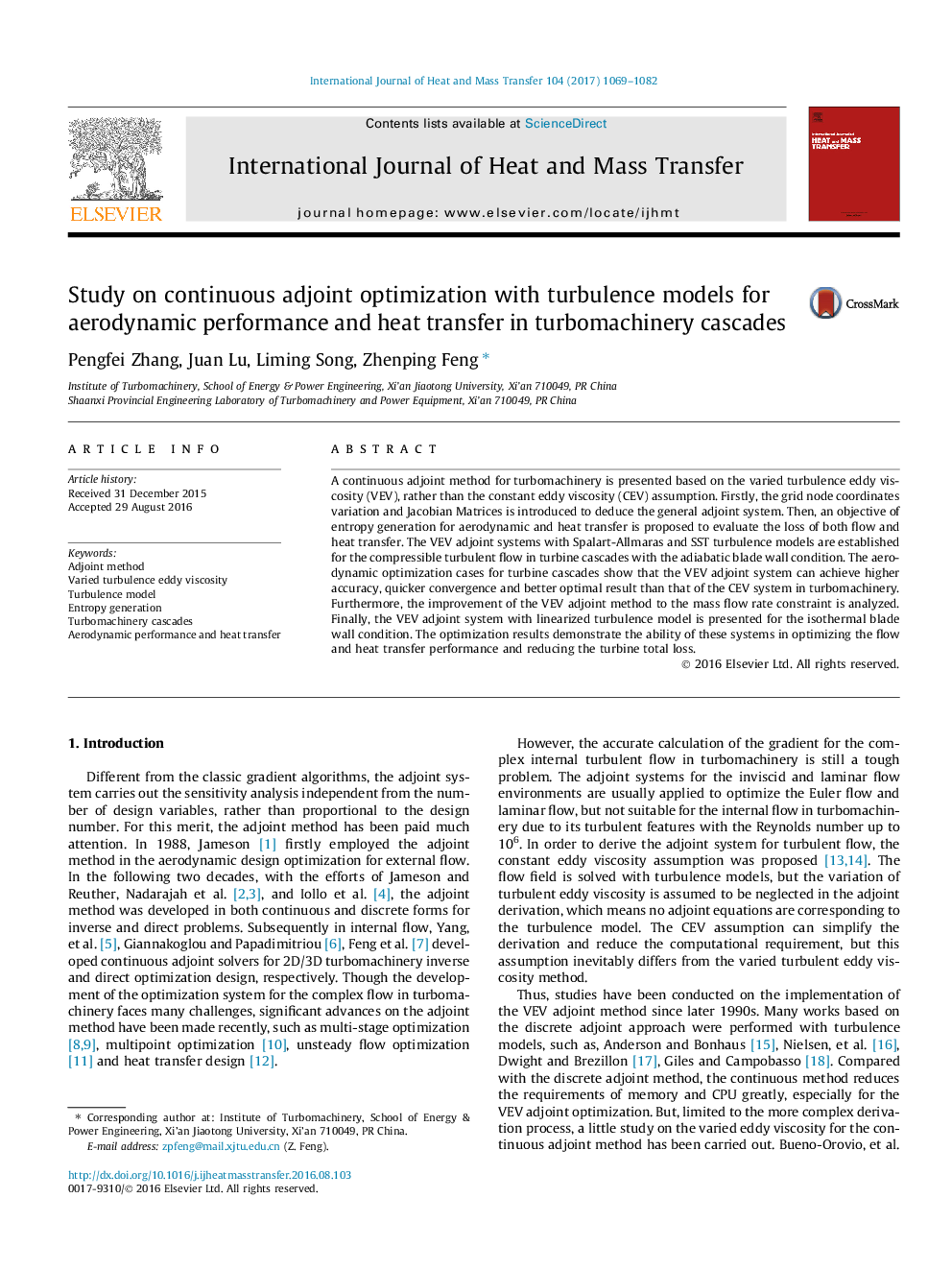| Article ID | Journal | Published Year | Pages | File Type |
|---|---|---|---|---|
| 7055077 | International Journal of Heat and Mass Transfer | 2017 | 14 Pages |
Abstract
A continuous adjoint method for turbomachinery is presented based on the varied turbulence eddy viscosity (VEV), rather than the constant eddy viscosity (CEV) assumption. Firstly, the grid node coordinates variation and Jacobian Matrices is introduced to deduce the general adjoint system. Then, an objective of entropy generation for aerodynamic and heat transfer is proposed to evaluate the loss of both flow and heat transfer. The VEV adjoint systems with Spalart-Allmaras and SST turbulence models are established for the compressible turbulent flow in turbine cascades with the adiabatic blade wall condition. The aerodynamic optimization cases for turbine cascades show that the VEV adjoint system can achieve higher accuracy, quicker convergence and better optimal result than that of the CEV system in turbomachinery. Furthermore, the improvement of the VEV adjoint method to the mass flow rate constraint is analyzed. Finally, the VEV adjoint system with linearized turbulence model is presented for the isothermal blade wall condition. The optimization results demonstrate the ability of these systems in optimizing the flow and heat transfer performance and reducing the turbine total loss.
Related Topics
Physical Sciences and Engineering
Chemical Engineering
Fluid Flow and Transfer Processes
Authors
Pengfei Zhang, Juan Lu, Liming Song, Zhenping Feng,
